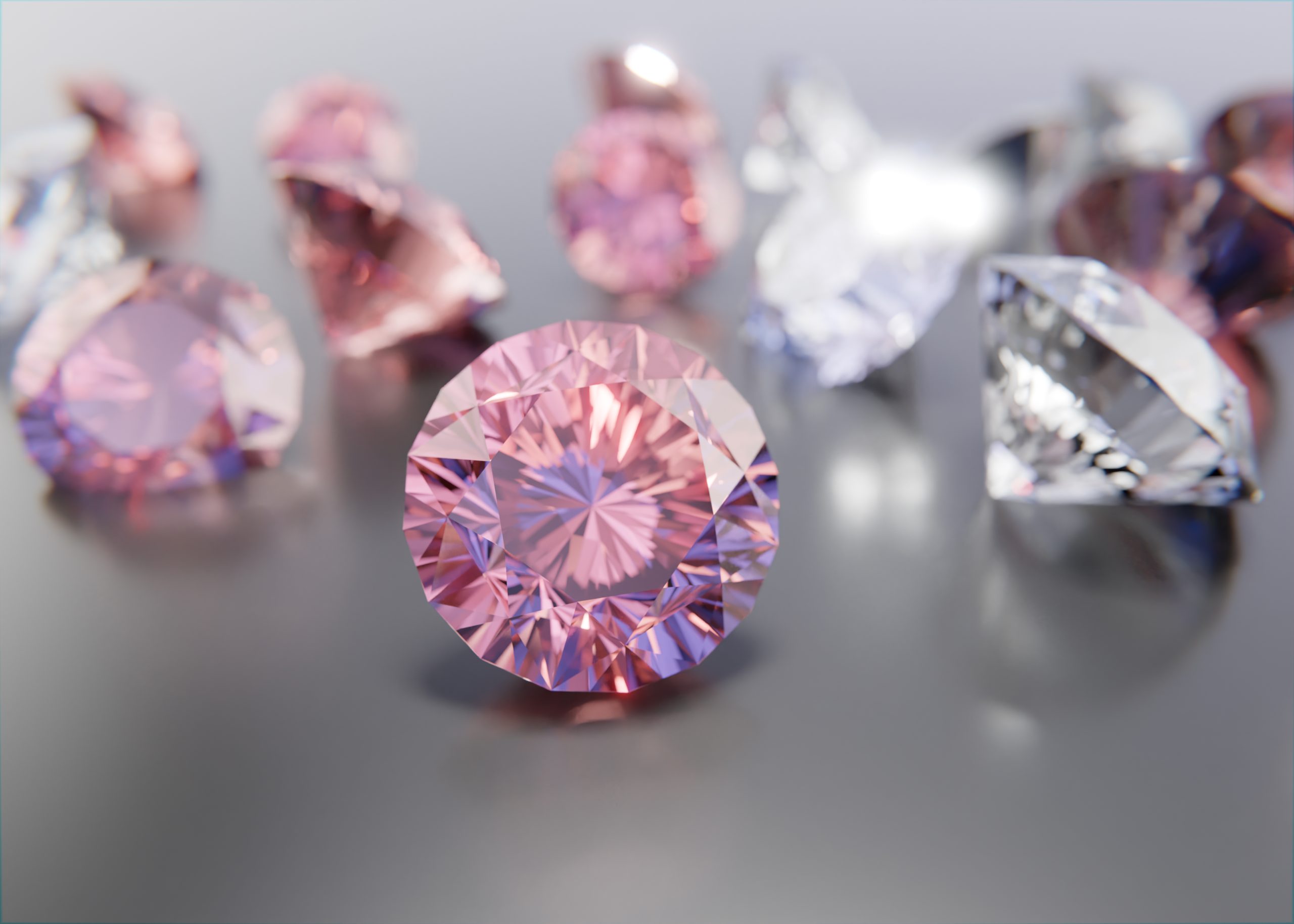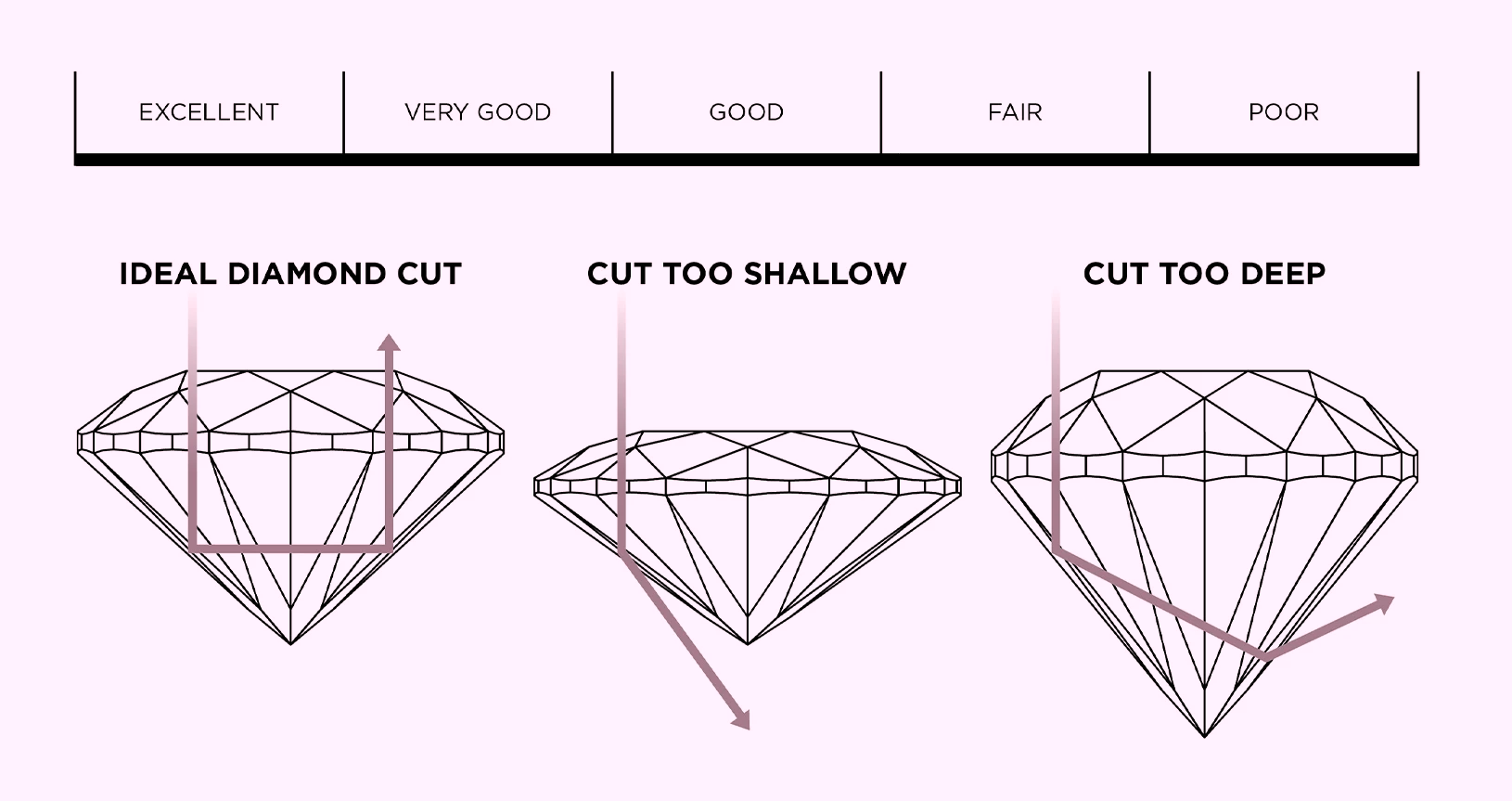When grading the cut of a diamond, one must first understand the factors that determine the cut quality of a diamond. The cut of a diamond is what gives the diamond its sparkle and brilliance. It is the proportion, symmetry, and polish of the diamond that determines its cut grade.

There are several factors to consider when grading the cut of a diamond, including:
The diamond’s proportions: This refers to the relationship between the diamond’s different dimensions, such as the depth and width of the diamond. Diamonds with proportions that are too deep or too shallow will not reflect light properly, which can affect the diamond’s sparkle and brilliance.
The diamond’s symmetry: This refers to the alignment of the diamond’s facets. Diamonds with poor symmetry will not reflect light evenly, which can affect the diamond’s sparkle and brilliance.
The diamond’s polish: This refers to the smoothness and finish of the diamond’s surface. Diamonds with poor polish will not reflect light properly, which can affect the diamond’s sparkle and brilliance.
To grade the cut of a diamond, gemologists use a standardized grading system that takes into account the diamond’s proportions, symmetry, and polish. The most common grading system used is the Gemological Institute of America (GIA) cut grading system, which uses the following scale:

- Excellent Cut Diamond: A diamond with an excellent cut grade will have proportions, symmetry, and polish that are all within the ideal range, resulting in a diamond with maximum sparkle and brilliance.
- Very Good Cut Diamond: A diamond with a very good cut grade will have proportions, symmetry, and polish that are all within the very good range, resulting in a diamond with very good sparkle and brilliance.
- Good Cut Diamond: A diamond with a good cut grade will have proportions, symmetry, and polish that are all within the good range, resulting in a diamond with good sparkle and brilliance.
- Fair Cut Diamond: A diamond with a fair cut grade will have proportions, symmetry, and polish that are all within the fair range, resulting in a diamond with fair sparkle and brilliance.
- Poor Cut Diamond: A diamond with a poor cut grade will have proportions, symmetry, and polish that are all within the poor range, resulting in a diamond with poor sparkle and brilliance.
To determine a diamond’s cut grade, a gemologist will carefully examine the diamond using specialized tools and equipment, such as a loupe, a microscope, and a light source. The gemologist will carefully measure the diamond’s proportions and assess its symmetry and polish. Based on this examination, the gemologist will assign the diamond a cut grade according to the GIA cut grading system.
It is important to note that the cut grade of a diamond is not the only factor that determines its overall quality and value. The diamond’s color, clarity, and carat weight also play a role in its overall quality and value. However, the cut grade is an important factor
General information to keep in mind when selecting a diamond cut:
- The cut of a diamond is a crucial factor in determining its overall appearance and value.
- The cut refers to the proportions, symmetry, and polish of the diamond, which affect how light is reflected and dispersed.
- A well-cut diamond will have a balanced and symmetrical shape, with evenly spaced facets that create a sparkle and brilliance.
- Diamonds are typically cut into specific shapes, such as round, oval, pear, cushion, and emerald, which determine the overall appearance and style.
- The most popular diamond shape is the round brilliant, which has 57 or 58 facets and is designed to maximize light reflection and dispersion.
- The cut grade of a diamond is based on a scale ranging from Excellent to Poor, with Excellent being the highest and Poor the lowest.
- A diamond with a higher cut grade will have more sparkle and brilliance, and will be more valuable than a diamond with a lower cut grade.
- The cut of a diamond can also affect its durability and resistance to chipping or breaking.
- It is important to consider the cut of a diamond when choosing a diamond engagement ring, as it will affect the overall appearance and value of the ring.
- It is recommended to consult with a certified gemologist or diamond expert when choosing a diamond to ensure the best cut and quality for the budget and preferences.